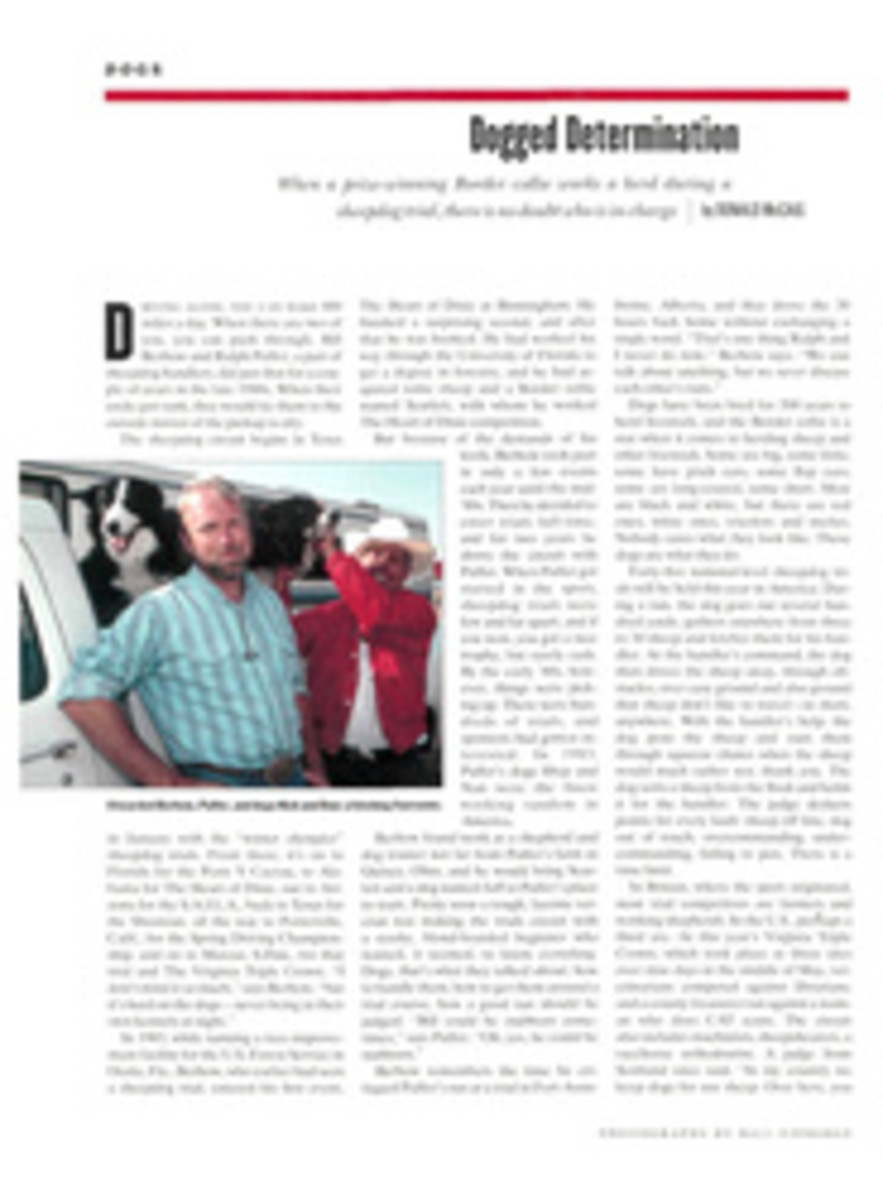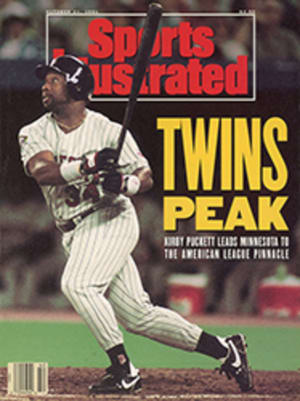
And Now to the Tape
The viewing room at Phoenix Communications looks suspiciously like a high school foreign language lab. Eighteen carrels, separated by wooden dividers, are pressed up tightly against the walls. Perched in front of each is a straight-backed chair. But inside each carrel, instead of a bulky reel-to-reel tape machine and headphones, is state-of-the-art video equipment, including a color television set and two VCRs the size of Hyundais. Through these TVs, each of which is linked to eight satellite dishes, passes every major—and some not so major—sporting event in the U.S. Each carrel has one additional item: a professional viewer.
"Viewers are our entry-level positions," says Geoff Belinfante, a senior vice-president and executive producer at Phoenix Communications. "And they have to watch a lot of sports."
Located a punt or so from the Meadowlands Sports Complex in East Rutherford, N.J., Phoenix is one of the nation's largest independent sports-production companies. It provides an assortment of taped sports highlights for local and network television stations across the country and produces a variety of its own syndicated programs, including Pennant Chase, Power Stick Hockey Week and its flagship, This Week in Baseball, as well as home videos and highlight tapes that are shown on big screens in stadiums and arenas. At Phoenix, every frame of footage must be viewed as events are happening, and to be a viewer is to watch and watch and watch sports—eight hours every day and as many as six days a week.
Not so bad, right? Pop open a cold one, prop up your dogs and watch the Browns play the Dolphins—for money. The starting salary is $18,000. But before you board a Jersey-bound Greyhound, remember real work is involved. Phoenix has 15 viewers, most of whom are recent college graduates who aspire to produce, write or direct one of the company's sports shows. When they watch a broadcast, their laps are loaded, not with Doritos and Twinkies, but with clipboards, on which they keep track of the action with a unique shorthand that allows a producer to put together a highlight package by simply scanning the view sheets and selecting the most appropriate snippets.
Take one typical viewer, Sue Van Bernum, 27 (who was recently promoted to assistant producer), and one typical game, between the Royals and the Twins in Kansas City. During the game Van Bernum scribbled out several sheets in shorthand. In the top of the seventh, Royals shortstop Bill Pecota dropped to his knees to field a Brian Harper grounder and then made a tough throw to first baseman George Brett, who dug the ball from the dirt for the out. Van Bernum wrote "great play" in the left-hand margin of her view sheet, followed by one star, with four being the top rating. On the right-hand side of the page, she wrote out details of the play. An inning later Pecota fumbled with a Dan Gladden short hop, reaching into his glove and hobbling the ball several times before blowing the throw. This time, Van Bernum wrote "blooper" in the margin, again followed by a star and a description.
Even those amusing scenes of comic relief that are shown as part of highlight footage—like a dugout hotfoot—are noted by the viewers. Because the feeds are usually direct from the satellite, the broadcasts that viewers see normally don't break for commercials, and it's during this time that much of what's fun and unexpected occurs. If a producer wants footage of players or fans fooling around, Van Bernum's notes will make it easy to go right to that spot on the tape.
When a game is finished, the tape, with the view sheet wedged inside the case, is logged into Phoenix's enormous video library. Tapes are saved for about a year, unless the event is especially significant—a no-hitter or the like. In these cases, the tapes are stored permanently. "We have more than 40,000 videos of 10 or so different sports," says Belinfante. There is also a large film library. "Our oldest piece of identifiable footage is a 1905 shot of John McGraw parading his team around in an open car."
"People don't care about most of the footage until it affects them," says former senior vice-president Terry Kassel, who now runs her own sports media sales company. "It doesn't matter until it matters. There was a lot of stuff on [the late baseball commissioner Bart] Giamatti, but it didn't become significant until he died."
Significance, of course, is in the eye of the beholder. Phoenix gets as many as 25 calls a day with a variety of footage requests. "Just this morning I heard from Today, ESPN, CBS and Real Life with Jane Pauley," says Julie Krug, who handles most queries. Prices vary for tapes, depending on whether the clip is to be used on network television; it's $75 an hour if some fan in San Francisco just wants a copy of a game in which a wandering camera caught his mug at Candlestick Park. Phoenix also has an exclusive deal with the Blockbuster Video chain, and many of Phoenix's most popular titles-World Series highlights, baseball bloopers and greatest-moment packages—are now available at Blockbuster stores.
"Our most requested clip is probably one of the classics, like Carlton Fisk's home run [in Game 6 of the '75 World Series]," says Mike Kostel, director of baseball programming. "But that doesn't make it the Indiana Jones of clips. It's not asked for that many more times than another video."
"We even have put together a show on baseball during times of war," says Belinfante. "That illustrates what kind of depth we have."
Rights to individual sports are licensed to Phoenix by Major League Baseball and other professional and amateur governing bodies and rights holders. Phoenix pays royalty fees to those groups, and in some cases—for example, the NBA—Phoenix's license is limited, meaning it can provide highlight clips but is not permitted to produce a show.
Phoenix, first called Major League Baseball Productions, was conceived under league auspices in 1975. The NFL had had its own weekly highlight show for several years, but for baseball there was nothing. "It was a lot more difficult for us, because we didn't just have 13 games on Sunday," says Belinfante. "We had 26 teams to worry about every night of the week."
So video systems were set up in every park to shoot every game, and three-quarter-inch tapes of the games were sent to New York City to be cut up for the sport's first highlight show, This Week in Baseball, which went on the air in 1977. It was an immediate success—and is still one of the highest-rated syndicated sports programs—but in 1985, baseball commissioner Peter Ueberroth cut it loose. The people who had been running it bought the division from Major League Baseball and formed Phoenix as a private company. In February 1990 they moved to their present offices in New Jersey. The release from Major League Baseball freed Phoenix to produce programming and highlight packages for other sports as well.
During the baseball season Phoenix also fires off live nightly broadcasts to Japan and South America. There is now a Spanish-language version of This Week in Baseball, narrated by Venezuelan journalist Juan Vene, a press-box veteran of 30 World Series, and shown in Central and South America as well as domestically. With baseball becoming a medal sport for the first time at the '92 Barcelona Olympics, Phoenix is working with Major League Baseball to expand the game's international appeal through its weekly program Baseball '91. The show, which began last season, is broadcast across Europe and Australia.
Phoenix edits and scores its video in New Jersey and then, in the case of This Week in Baseball, sends the product to New York City, where the script is recorded and voice, music and sound effects are melded together. In a graffiti-covered building near Manhattan's 10th Avenue, Mel Allen sits in a sound booth and reads the copy. Just outside is an acre or so of mixing boards and television monitors, resembling a launch room at NASA. "Everyone from Springsteen to the Stones has recorded or mixed here," says receptionist Jeffrey Glenn.
"We've changed over the years," says Allen. "With all the highlights that appear nightly on ESPN and local stations, we now focus more on feature material."
But what hasn't changed much is the ever-increasing need to sift through the heap of daily sporting events that carom above the earth's atmosphere. For that, there will always be viewers. "I guess the biggest difference since I started here is that now I don't watch sports very much away from work," says viewer Kristin Pompeo. "How many people can say that?"
PHOTO
JEFFREY LOWE
With eight satellite dishes, Phoenix can monitor major, and minor, events all over the U.S.
PHOTO
JEFFREY LOWE
The viewers use state-of-the-art video equipment and a basic clipboard, but no Doritos.
PHOTO
JEFFREY LOWE
Belinfante has helped Phoenix rise from baseball-only to an all-sports operation.

